Slowly abandoned when Christianity spread throughout Scandinavia, and then forgotten about for centuries, Norse Paganism is making a bit of a comeback.
But what is this Old Norse religion, and what do its followers believe? And, most importantly: should you also become a Norse Pagan?
What is Norse Paganism?
What do Norse pagans believe?
How old is Norse paganism?
Are there still Norse pagans?
Festivals, rituals and runes
How to practice Norse paganism
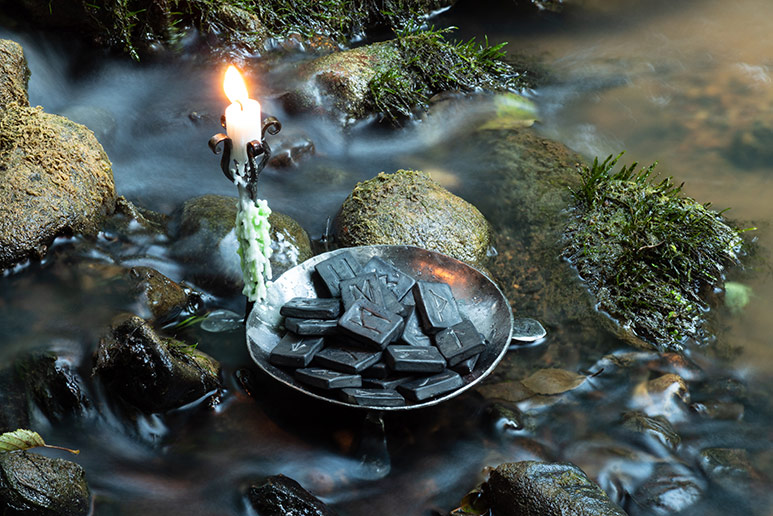
What is Norse Paganism?
In the very simplest terms, Norse Paganism is a type of pagan religion.
Sometimes known as heathenry, Norse Paganism is based on the old Norse religion that was practised in Scandinavia before Christianity showed up.
Followers of Norse Paganism believe that life is centred on a vast sacred tree called the Yggdrasil, which has different realms extending out from it.
Humans inhabit one realm, which is known as Midgard.
The other realms are home to multiple gods and goddesses, as well as other beings like giants, dwarves and elves.
If all this sounds like something from Lord of the Rings, you’re not a million miles off; author JRR Tolkein was actually inspired by Norse mythology and it informed his most famous book, The Lord of The Rings.
But dig a little deeper beyond the mythological creatures and you’ll find Norse Paganism is actually pretty complex.
So while you may have heard about dwarves, elves and gods such as Odin and Thor, there are many more layers of the religion to uncover.
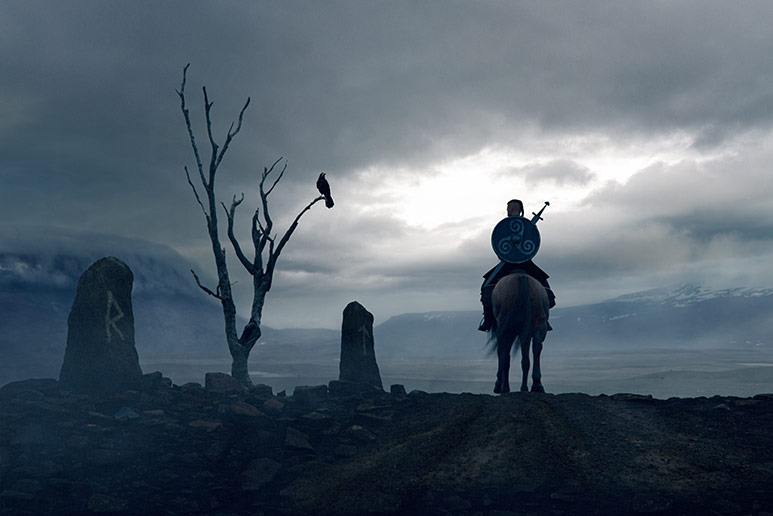
Modern Norse Paganism
It isn’t only scholars and historians who are interested in Norse Paganism.
In recent years, there has been renewed interest in actually following the religion, with many modern-day pagans delving deep into oaths, learning Norse runes, and welcoming ‘patron’ or ‘matron’ deities into their lives.
Norse Paganism is an old religion, but also a living one – albeit with a relatively small number of followers in modern times.
What do Norse Pagans believe?
Unlike the Abrahamic religions (Christianity, Judaism and Islam), Norse Paganism is a polytheistic religion – in other words, followers believe in multiple gods and goddesses.
These gods exhibit what we might recognise as human traits.
The gods argue, make errors and have flawed personalities, just like us – which explains why Norse mythology can be as compelling as a modern-day soap opera.
Gods and goddesses in Norse Paganism
The gods of Norse paganism can be grouped into two main pantheons.
The first pantheon of Norse deities, Æsir, includes gods such as Odin, Thor and Baldr.
These gods and goddesses are often associated with ‘social’ concepts such as war and marriage.
The second group of Norse deities, Vanir, is more closely associated with fertility, sexuality and seeing into the future.
Freyja, for example, is part of the Vanir pantheon.
According to Norse mythology, Æsir and Vanir waged war against each other and eventually merged into one unified group of gods.
Beyond those two main groups of gods and goddesses mentioned above, Norse pagans also believe in Jötunn (sometimes loosely translated as ‘giants’), as well as other non-human creatures such as elves and dwarves.
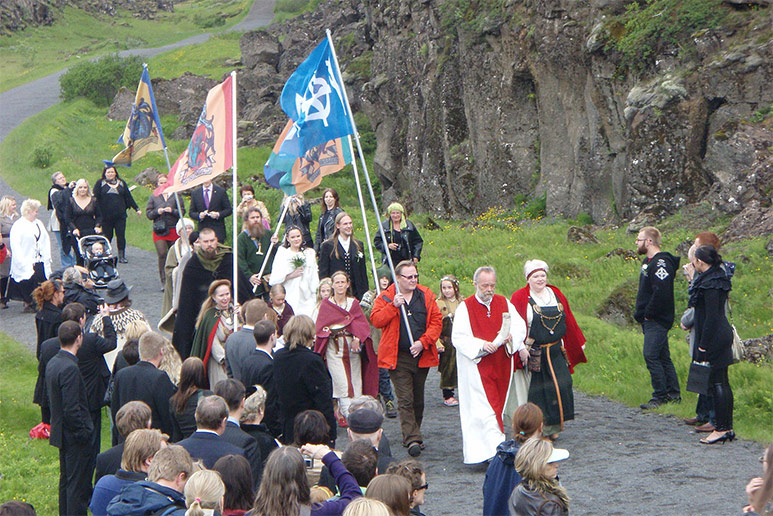
Animism in Norse Paganism
Norse Pagans typically subscribe to an animistic worldview – that is, a belief that all living things and phenomena have a spiritual essence.
Holy texts in Norse Paganism
Aside from runestones, like the ones you can see in museums across the region, there aren’t any written texts from pre-Christian Scandinavia.
So there’s no ‘bible’ or specific religious text in Norse Paganism, and no list of commandments, either.
That makes Norse Paganism somewhat ‘decentralised’ and open to interpretation, and there can be significant differences in the way that believers choose to follow the faith.
The afterlife
Many Norse Pagans believe that the dead go to another realm (such as Valhalla, where it’s said that half of those killed in combat would be taken to meet Odin).
Things are definitely not as clean cut as with Christianity, which sees good people in heaven and bad people in hell.
But most agree that there is some kind of life after death, and the afterlife remains an important concept within Norse Paganism.
Branches of modern Norse Paganism
As with other religions, there are multiple different branches of modern Norse Paganism (sometimes simply known as heathenry), which all vary slightly in their interpretations and their practices.
Some of the main ‘paths’ of Norse Paganism are outlined below.
Ásatrú
Ásatrú is a new-ish movement that attempts to bring elements of Iceland’s pre-Christian religion back into the modern world.
Started in 1972, it is now the fastest-growing religion in Iceland, with well over 4000 members.
There are 9 ‘Noble Virtues’ that followers of Ásatrú try to live by:
- Courage
- Truth
- Honour
- Fidelity
- Discipline
- Hospitality
- Self-reliance
- Industriousness
- Perseverance
As well as following these nine virtues, and celebrating Norse mythology, the group promotes values like fairness, tolerance and acceptance.
In recent years though, the symbols of Ásatrú have been co-opted by white supremacist groups in the belief that the Vikings were a ‘pure’ race.
Vanatru
Sometimes known as ‘the Way of the Vanir’, Vanatru focuses predominantly on the Vanir pantheon of Norse deities, which includes Freyja, Njörun and Freyr.
Rökkatru
Often considered the ‘dark’ side of Norse Paganism, followers of Rökkatru focus on a third pantheon of deities – the underworld gods.
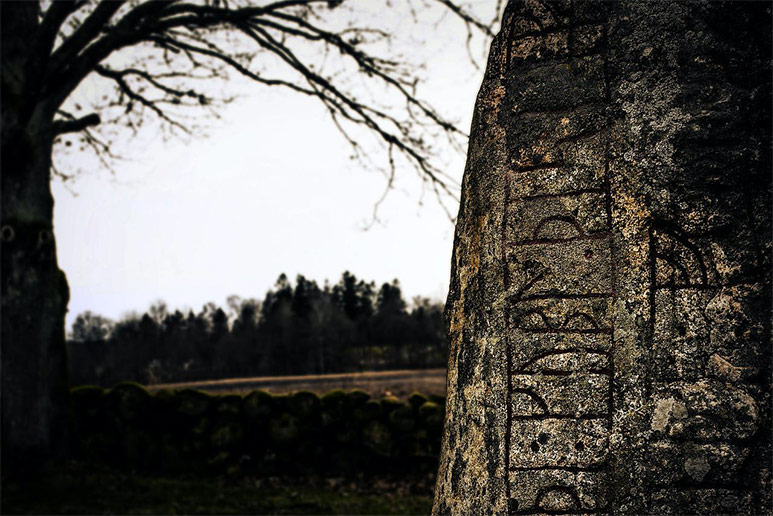
How old is Norse Paganism?
The earliest roots of Norse Paganism are thought to date back to the Iron Age, or even the Bronze Age.
And by the time of Christ, obvious hallmarks of Norse Paganism were beginning to take shape (Roman historian Tacitus – born in around 56 AD – noted that the Germanic peoples were polytheistic).
However it was during the Viking Age that Norse Paganism truly began to expand its reach, with Norse people settling across large parts of Northern Europe.
Are there still Norse Pagans?
When Christianity spread throughout Scandinavia, between the 8th and 12th centuries, aspects of Norse Paganism began to disappear.
Christianisation was a slow process that took hundreds of years, and modern archaeological digs have revealed that many people across Scandinavia still clung to indigenous beliefs long after Christianity had arrived.
‘Proper’ Christian practices did eventually take hold in every corner of Scandinavia – including the far north, where the Sami people remained unconverted until the 1700s.
But many parts of Norse Paganism (such as elves, for example) remained ingrained in Scandinavian folklore.
So while Norse Paganism almost disappeared, parts of it lived on. And a renewed interest in Norse mythology (spurred on by Marvel movies and Netflix series) has made a new generation of people explore the religion for themselves.
How many Norse Pagans are there?
Norse Paganism isn’t an organised religion, so it’s hard to know how many followers there are around the world.
However, there has been a definite increase in the number of people adhering to Norse Paganism in recent years.
Google Trends, which reports on how people use the search engine over time, shows a surge in interest in Norse Paganism starting in 2018.
And in 2019, the BBC reported that Ásatrú was one of Iceland’s fastest growing religions.
Festivals, rituals and runes
Seasonal festivals and their associated rituals are still important to many Norse pagans, including Midsummer, Yule and Ostara (a celebration of the spring equinox).
Some Norse pagans also believe in divination and the the power of runes to offer guidance, protection, and manifestation.
Ancient symbols such as Thor’s hammer (the Mjölnir) and the Vegvísir symbol are still important for many Norse pagans, though some prefer to focus on the spiritual side of things.
Do Norse Pagans still make sacrifices?
If you’ve seen shows like Vikings, you might be forgiven for wondering if Norse Pagans still make sacrifices.
Indeed, sacrifice (blót) is believed to have been a very important part of Norse rituals.
But for the vast majority of modern Norse Pagans, live sacrifice is one part of the religion that will stay firmly in the past.
Other less gory types of ritual are usually favoured instead these days – like offering up valuables to bogs or wetlands as a ‘sacrifice’, or simply drinking mead (an ancient alcoholic drink made using honey).

What kind of people become Norse Pagans?
For a lot of newcomers to Norse Paganism, things start with a casual interest in Norse mythology and then develop from there.
Others may have a family connection to the Nordic countries and feel that they want to explore this spiritually, either instead of or as well as a trip to Northern Europe.
In recent years online DNA tests, which claim to tell people more about their ancestry, have helped lots of people discover that they have a genetic link to the Nordic countries.
Sometimes, people who have had difficult experiences with more mainstream religions such as Christianity feel drawn to Norse Paganism, as it incorporates elements of magic, mysticism and shamanism.
How to practice Norse Paganism
Unlike more mainstream religions, Norse Paganism can feel a little ‘niche’ and inaccessible – and of course for many people, that is part of the appeal.
Many proponents rave about Ryan Smith’s book The Way of Fire and Ice, which acts as a kind of handbook for developing personal practices and building a community around Norse Paganism.
Published in 2019, it introduces some of the main elements of Norse Paganism, including the runes and the nine realms (or worlds) of Norse cosmology.
Neil Gaiman’s Norse Mythology, meanwhile, reinterprets old tales in a lively way, making the whole subject feel much more accessible.
Some followers suggest the simplest way to get started with Norse Paganism is to simply allow yourself time to connect with the gods – whether that’s by meditating, or simply taking a walk in nature.
Is Norse Paganism a ‘Viking’ religion?
Many people are first exposed to elements of Norse Paganism through TV shows and Hollywood movies.
This may explain why some followers embrace elements of ‘Viking’ style.
And while Norse mythology and the Viking ‘look’ portrayed by modern media are undoubtedly intertwined, there is no specific requirement for followers to dress like Vikings, for example, or get a Viking-style haircut.
See also
Norse gods, giants and goddesses
The Valkyrie symbol: what is it, and what does it mean?
Norse names and their meanings

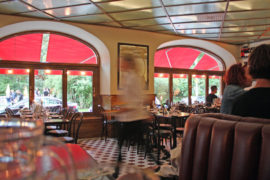

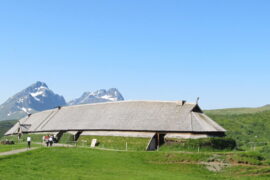
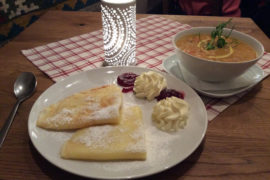
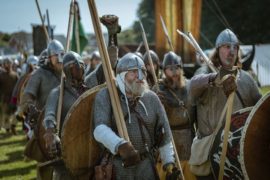

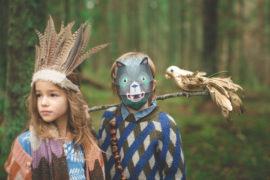
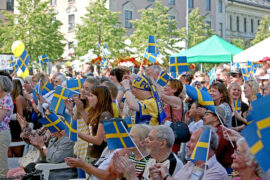

Could someone tell me what the 7 worlds are?
i am Nordic/Russian-amarican by blood i have been norse pagan for 2 months now this artical really gave me more insight as to whats actually happining to my religion and there is a chance for me to meet others like me
I have been told that atheism is the true way of the universe my entire life, however it offers me no guidance, no spirituality and no happiness. I am full of conflict, want to believe, I want to have guidance in my life, when times are hard. I think I want to worship something, someone, and north religion speaks to me the most as I am Swedish, and I wish to carry on my ancestors legacy and belief with me.
May the allfather be with you
I am Scandinavian and Norwegian by blood. My family came to america in 1906. Im 4th generation for years i had felt connected with the yggdrasil. Im so happy that the religion is picking up traction again.
The reason I am a Norse/Germanic Pagan as it is the only spiritual channel that I speaks to my four medicine wheel directions. Warrior, Monk, Shaman, and Druid.
I come from the Suebi tribe in Germany… family never left the Black Forest.
Long line of Pagans.
Sorry to hear that. But we won’t hold it against you!
Norse pagans in germany also rigt?
Yes, in fact migration/genetics records show that the Germanic tribes migrated to areas such as Norway and Sweden. There the development and culture of those descendants from Germanic tribes changed over time, however slightly, for example language like Wótan/Wódanaz turned into Óðinn and in England Wodan. Although similar, these cultures further developed their own rituals and practices that may be different on the surface, but very similar at its core.